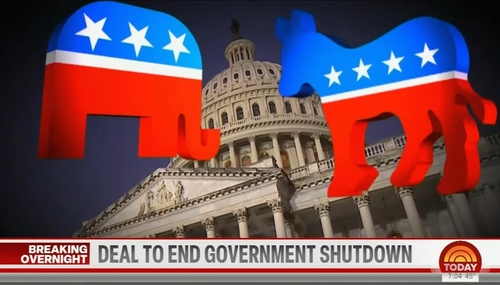Students and faculty members at the all-female Smith College in Northampson, Mass., apparently tried to avoid a repeat of an “ugly episode” at the University of Missouri, where a communications professor was caught in a video calling for the removal of an instructor from an on-campus demonstration earlier this month.
According to an article written by Callum Borchers for the Washington Post, the pupils and teachers from the liberal-arts school held a sit-in on Wednesday to protest racial discrimination but didn't allow people from the media into the event – unless those journalists pledged allegiance to the cause.
If you failed to do so to the protesters' satisfaction, you were abruptly turned away from the event.
The situation was summed up by Alyssa Mata-Flores, a 21-year-old Smith College senior and one of the sit-in's organizers, who stated on the MassLive.com website:
The rule was born from the way that media has historically painted radical black movements as violent and aggressive.
We are asking that any journalists or press that cover our story participate and articulate their solidarity with black students and students of color. By taking a neutral stance, journalists and media are being complacent in our fight.
In another article -- this one written by Laura Newberry -- the goal was described as “an effort to create a safe space free from potential insensitivity from the news media,” so activists barred reporters from covering the protest, which drew 300 to 500 students from 12 noon to 12 a.m. in the college student center.
“Similar limitations have been put on media at demonstrations held at the University of Missouri and colleges across the country, including Amherst College,” Newberry stated.
“Wait,” Borchers stated, “it gets better/worse.”
Stacey Schmeidel, director of media relations for the independent women's college with coed graduate and certificate programs, told Newberry the school actually supports the activists' ban on media.
"It's a student event, and we respect their right to do that, although it poses problems for the traditional media," she added.
Schmeidel said that as far as she's aware, the sit-in was the first Smith event to bar media coverage. She also indicated that the college reserves the right to remove reporters from the student center because it's a private campus.
“Smith is, indeed, a private school – $63,950 per year worth -- which is a relevant differentiator from the state-run University of Missouri,” Borchers noted. “And if students and faculty need to discuss sensitive issues behind closed doors, they’re certainly entitled to do so.”
An article in The Daily Beast website reported that on Nov. 9, the day University of Missouri president Tim Wolfe resigned: “The students pushed and shoved reporters and cameramen to prevent them from breaking through and interviewing protesters.”
“We calling the police because you aren’t respecting us,” shouted one protester at a member of the media as the protesters linked arms and moved in a phalanx to push the press further back, all the way to the perimeter of the area.
The protesters finally unlinked arms after nearly two hours, and the event transformed into a celebratory party with music, dancing and food.
“To welcome some reporters and not others,” the Washington Post reporter noted -- “and to make support for the cause the price of admission -- is to disregard not only the fundamental principles of journalism but also the school itself.”
The Smith College Student Handbook states: “All members of the Smith community are obligated to provide, protect and promote the free exchange of ideas in every form on the Smith College campus. ... If the campus is to be truly free, legitimate exchanges of dialogue must proceed without obstruction or coercion from any quarter.”
Borchers noted: “The reaction from journalists has been, well, what you’d expect.”
Writer Jennifer Bowers Bahney fired off this caustic post on the Twitter website: “As a Smith College graduate and a journalist, I find this profoundly disturbing.”
Charles Bierbauer, dean of the College of Mass Communications and Information Studies at the University of South Carolina in Columbia, stated that the students' actions indicate a “misunderstanding of the role of the media. Not showing up would be 'complacent.'”
“Dear College Kids,” wrote Gene Weingarten, a Wall Street Journal correspondent and Pulitzer Prize-winning journalist, “Please stop this crap. Just ... stop.”
However, at least one journalist supported the ban.
"The protesters had a legitimate gripe,” Terrell Jermaine Starr, a New York City-based journalist for the Washington Post, declared: “The black community distrusts the news media because it has failed to cover black pain fairly.”
As often happened on college campuses during the 1960s, the inmates are again trying to run the asylum, especially such liberal institutions as the University of Missouri and Smith College. The results of this show of force is anyone's guess.




